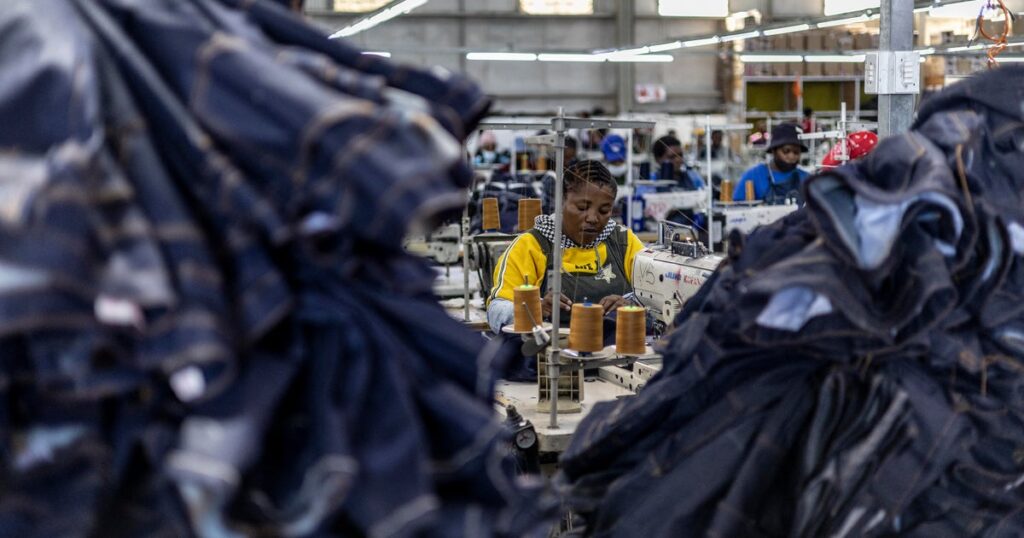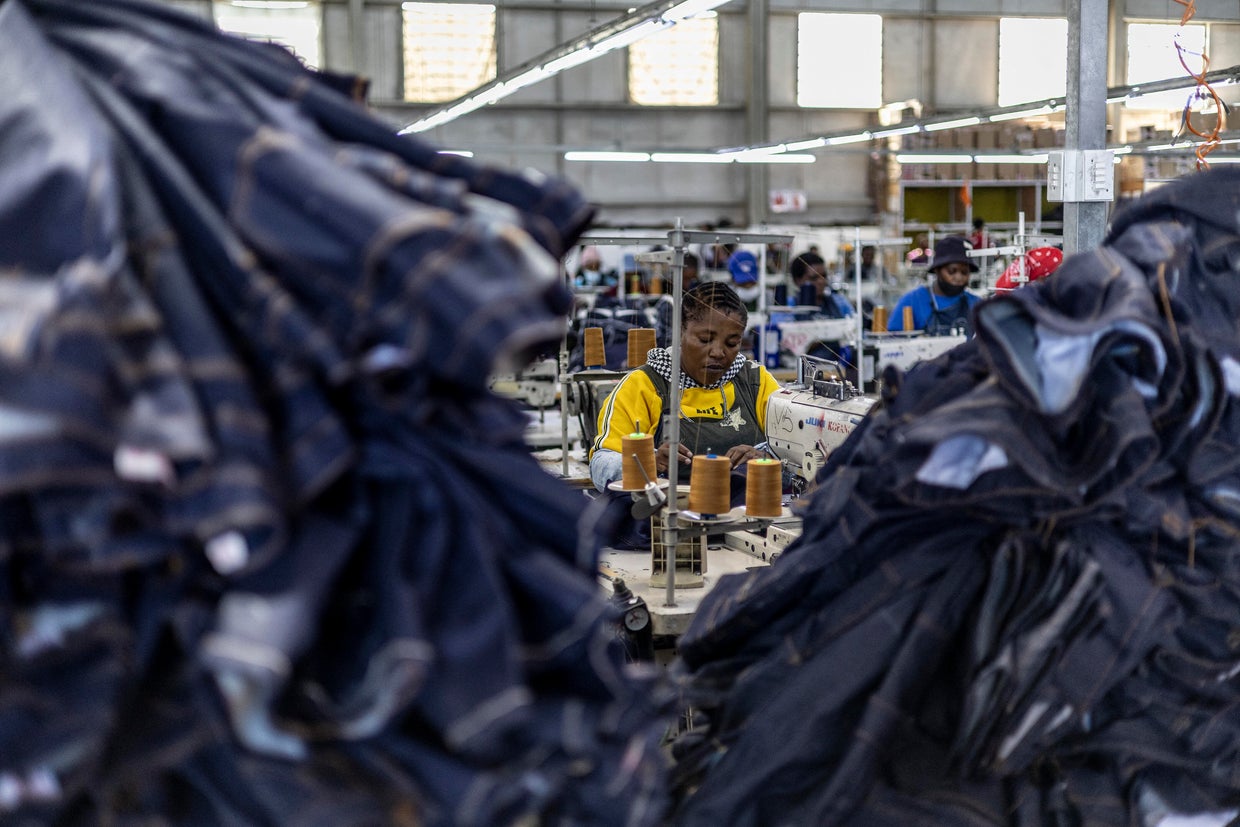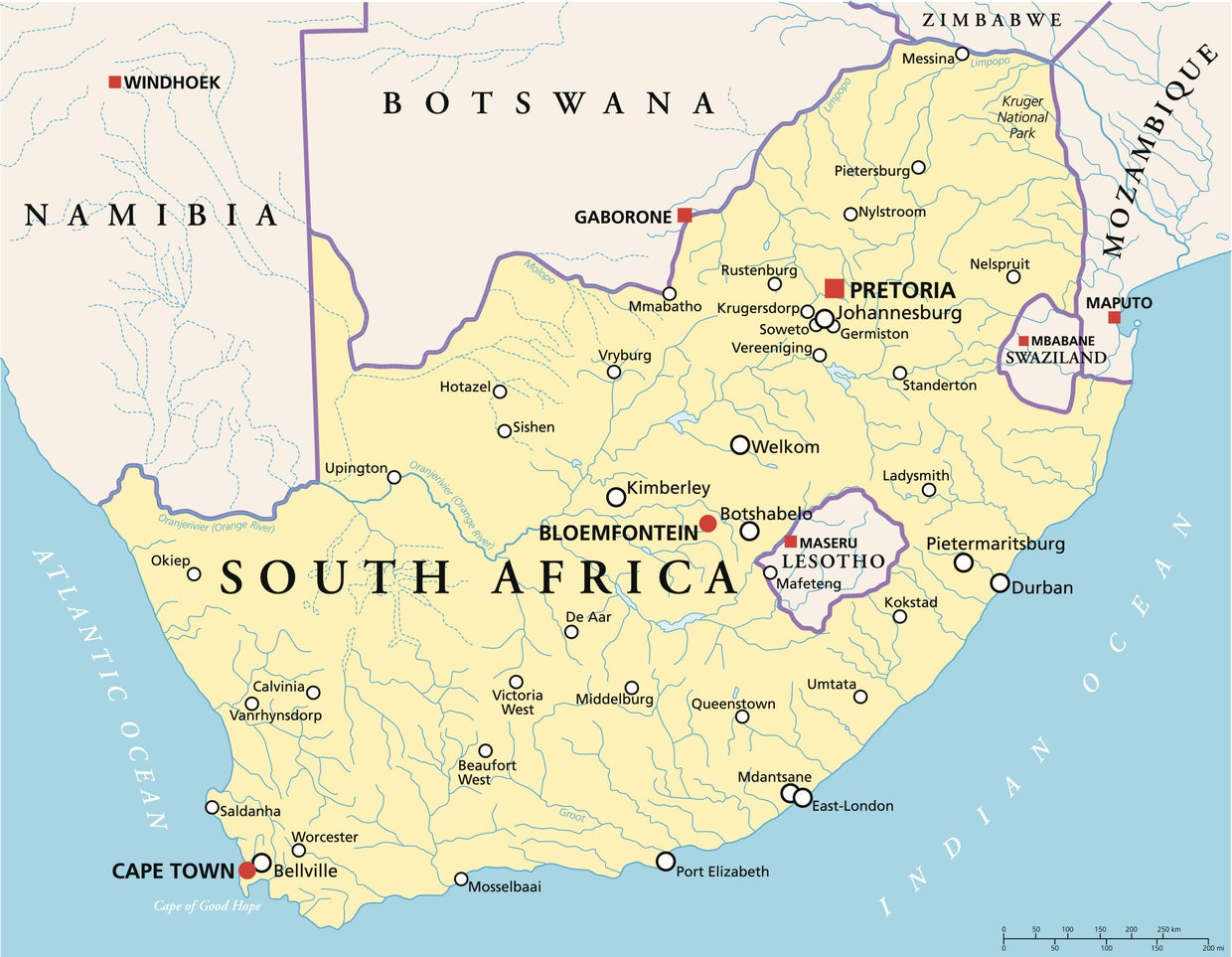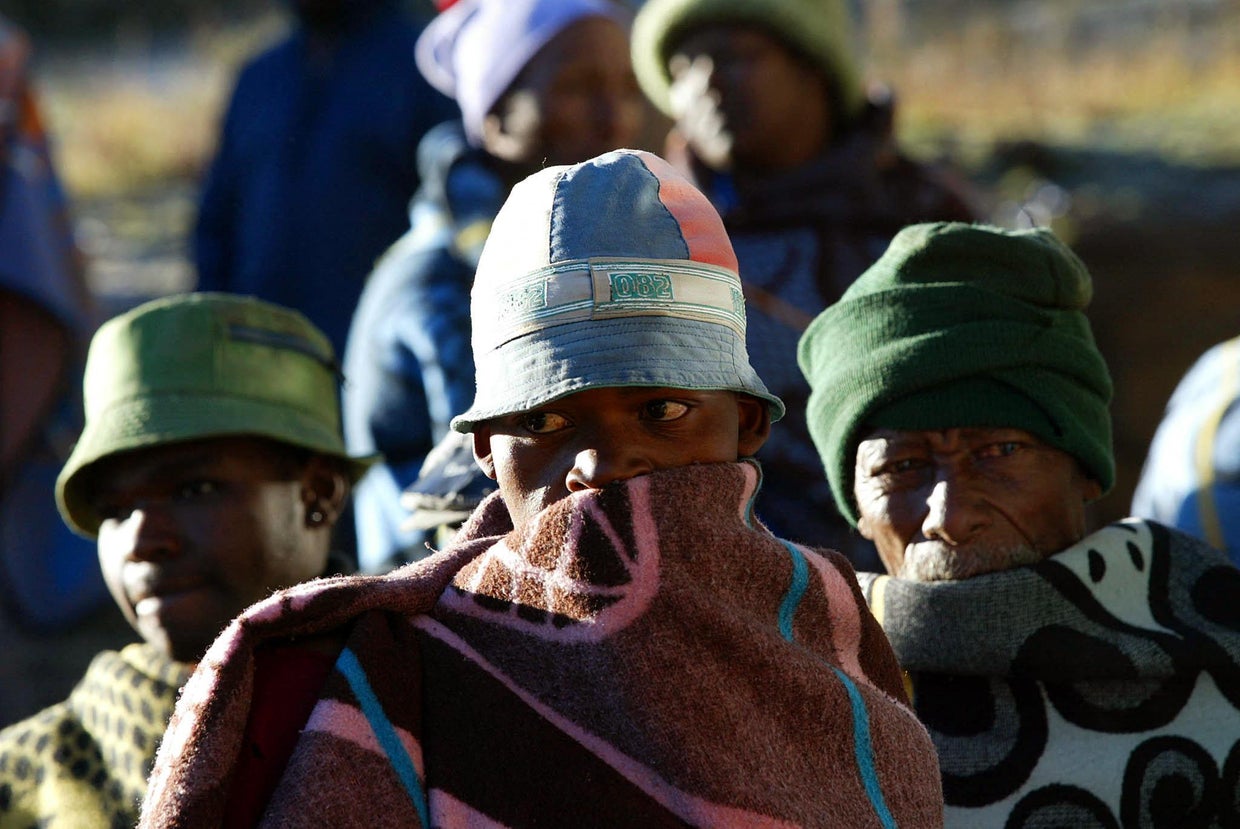Maseru, Lesotho — President Trump in March described Lesotho as a place “nobody has ever heard of,” and then this week he hit the tiny African kingdom with the highest of his “reciprocal” trade tariffs for any single nation.
Mr. Trump’s so-called “Liberation Day” tariffs included a whopping 50% levy on the small, impoverished nation’s imports, and the Lesotho government quickly said it would send a delegation to Washington.
“We need to urgently travel to the U.S. to engage with its executives and plead our case,” Trade Minister Mokhethi Shelile told reporters Thursday. “My biggest concern was the immediate closure of factories and job losses.”
Lesotho’s annual gross domestic product of $2 billion is highly reliant on exports, mostly of textiles, including jeans.
“There are 11 factories in the country, most of which export goods to the U.S. and provide employment to 12,000 workers,” Shelile said. “Goods currently in production will be affected by these tariffs and will not be exported to the U.S.”
ROBERTA CIUCCIO/AFP/Getty
He said he’d asked factories to continue operating “while we work on solutions,” and added that the U.S. action showed his country needed to “diversify” its trade relationships, which he said it had already started exploring.
“We cannot rely solely on the U.S.,” he said. “While this transition will take time, the process is already underway.”
To determine the rates of its new tariffs, the White House used a formula to calculate the sum of all the trade practices it deems unfair from other nations, including currency manipulation, tariffs and other barriers. Economists have questioned the methodology, and many foreign governments have complained the levies are unfair and misrepresent their trade imbalances with the U.S.
The White House claims, by way of that formula, that Lesotho imposes 99% tariffs and other barriers on U.S. imports.
Below is a look at the small kingdom, sometimes called “the Switzerland of Africa” thanks to its mountainous landscape. It took a bigger tariff hit from the White House this week than any other country.
Where is the Lesotho?
Completely surrounded by South Africa, Lesotho is the largest of only three enclaved states in the world, but it is far bigger than San Marino or Vatican City, both of which are within Italy’s borders.
At about 11,720 square miles, it is about the same size as Belgium but has a population of roughly 2.3 million, compared to Belgium’s nearly 12 million.
Getty/iStockphoto
Lesotho is known for the beauty of its mountainous terrain and styles itself the “Kingdom in the Sky.”
More than 80% of the country sits 5,900 feet above sea level and it is home to southern Africa’s only ski resort. Its highest peak is Mount Thabana Ntlenyana, with an altitude of 11,424 feet.
A constitutional monarchy like Britain, it is ruled by 61-year-old King Letsie III, who has no formal power. The government is led by a prime minister selected through national parliamentary elections.
What is Lesotho’s economy like?
With an annual gross domestic product of just over $2 billion, Lesotho is largely dependent on South Africa — it biggest trading partner — from which it imports most of its food, selling water in return.
The economy has been heavily reliant on textile exports bound for the United States through the African Growth and Opportunity Act (AGOA) trade deal, which provides duty-free access to the U.S. market for some African products. The Trump administration’s imposition of tariffs on African nations has raised questions over how likely the White House is to renew the AGOA pact when it expires in September.
Its traditional Basotho blankets are a national symbol and renowned for their vibrant patterns and woolen warmth. They are often loaded with meaning, from celebrating life and nationality, to fertility and royalty, peace, love and courage.
YOAV LEMMER/AFP/Getty
Lesotho ranks among the world’s poorest countries despite huge mineral reserves. British mine company Gem Diamonds said in 2018 that it had discovered a 910-carat stone in one of its several Lesotho diamond mines.
The country also pioneered the growing of cannabis for medical use in Africa.
Unemployment has remained stubbornly high, hitting nearly 25% in 2023, according to the World Bank.
“Poverty and inequality remain significant challenges,” the World Bank says. “Despite efforts to improve living standards, a significant portion of Lesotho’s population lives below the poverty line, with rural areas being particularly affected. Access to basic services such as healthcare, education, and clean water remains limited, contributing to poor health outcomes and educational attainment. High rates of HIV/AIDS and tuberculosis further strain the healthcare system, reducing the workforce and increasing the dependency ratio.”
A link to Prince Harry through charity, until recently
A charity co-founded by Prince Harry in Lesotho to help people living with HIV ran into turbulence this month after a bitter boardroom row led King Charles III’s younger son to step down as patron.
Its Zimbabwe-born chairperson, Sophie Chandauka, publicly accused the prince of “bullying” and being involved in a “cover up,” accusations the former royal has dismissed as lies.
Harry founded the charity in 2006 with Prince Seeiso of Lesotho, before it expanded to Botswana.
The charity’s name, Sentebale, is a tribute to his mother, Princess Diana, who died in a Paris car crash in 1997 when he was just 12.
Lesotho’s struggle with HIV/AIDS
At least one in four adults in Lesotho is infected with HIV, one of the highest rates in the world.
More than 230,000 people were receiving anti-retroviral treatment in 2021, according to the World Health Organization.
In 2020, the country achieved the UN’s “90-90-90” goal of 90% of people with the virus being diagnosed, on treatment and achieving viral suppression.
The country also has the second-highest incidence of Tuberculosis in the world, estimated at 724 cases per 100,000 people.






